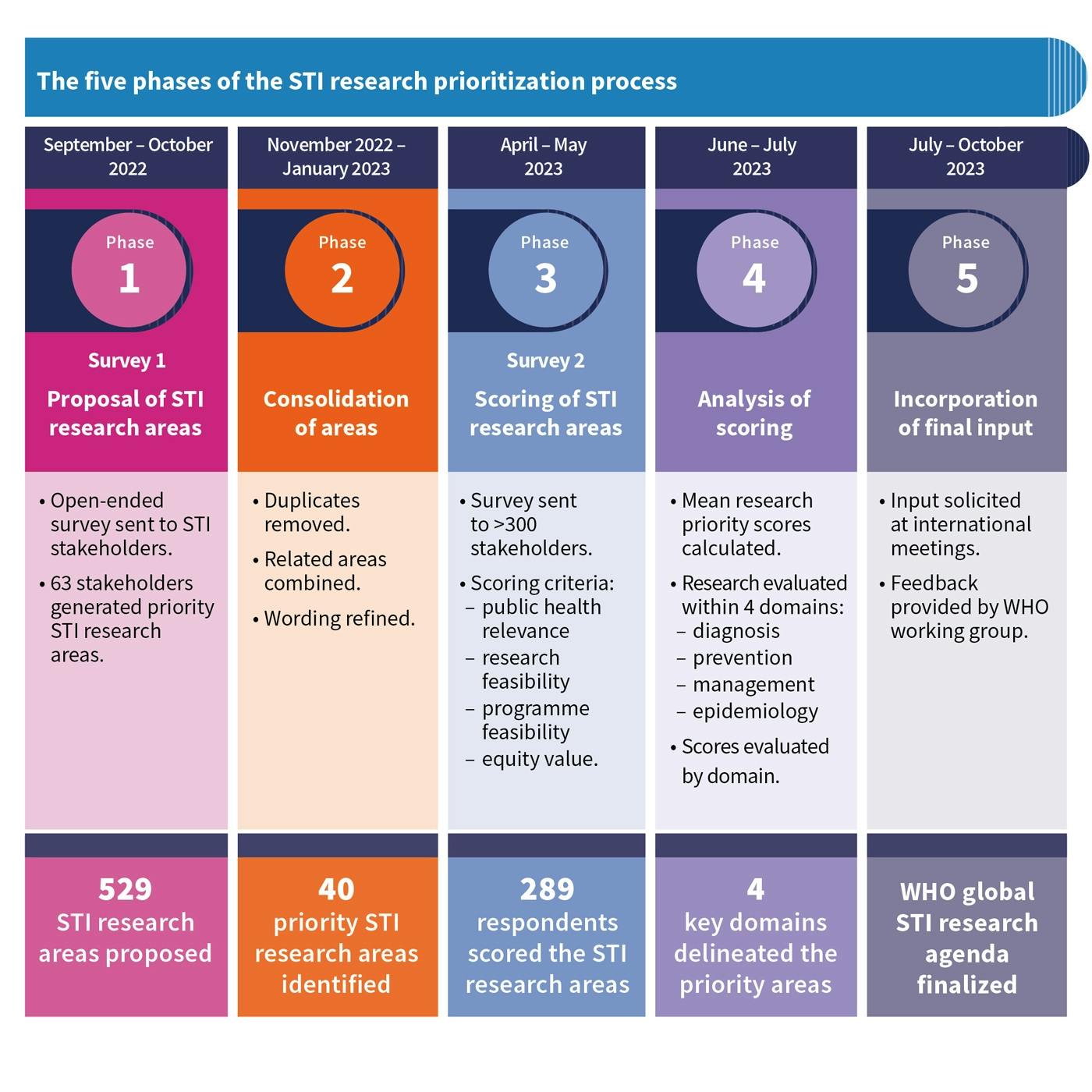WHO Global research priorities for sexually transmitted infections
Sexually transmitted infections (STIs) have a profound impact worldwide. As part of the response to this global health challenge, WHO initiated an STI research priority-setting exercise. The resultant WHO global research agenda for STIs has prioritised 40 research areas to inform STI policies and programmes by 2030, across four key domains: diagnosis, prevention, management and epidemiology.
The brief
Lushomo’s task was to develop an impactful visual identity for a summary brochure on the research and priorities. This was supported by complementary communication products to help share the message. All materials needed to encourage engagement with the research and the WHO’s Lancet Global Health article on the same topic.
Our approach
Using WHO’s brand guidelines, we developed a set of colours and icons to identify the research priority domains. We also used colour gradients to mark and order priority areas from the highest (darkest colours) to lowest (lightest colours). Information was divided into structured sections with infographics emphasising the key messages.
Visual Language
A bright, grid-based design is overlaid on a backdrop of the WHO navy. Solid white icons are used to represent the research priorities, and the diversity of bacteria, viruses, and parasites central to STI research.
The deliverables
In addition to this infographic brochure, we developed a single-page flyer and PowerPoint presentation to support the launch and dissemination of the research priorities.
The highlights
As stated in the brochure, more than one million STIs are acquired every day, worldwide. This staggering number drives home the importance of having a global agenda and clear priorities to guide further research into the management, treatment, diagnosis and prevention of STIs.











